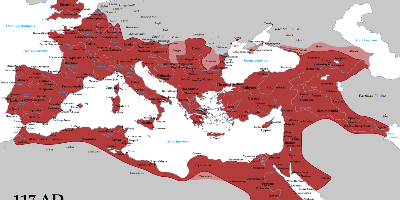1 janv. 1774 - Treaty of Kucuk Kaynarca
Description:
The Treaty of Kuchuk-Kainarji was a peace treaty signed on 21 July 1774, in Küçük Kaynarca (today Kaynardzha, Bulgaria) between the Russian Empire and the Ottoman Empire. Following the recent Ottoman defeat at the Battle of Kozludzha, the document ended the Russo-Turkish War of 1768–74 and marked a defeat of the Ottomans in their struggle against Russia. The Russians were represented by Field-Marshal Count Pyotr Rumyantsev while the Ottoman side was represented by Musul Zade Mehmed Pasha. The treaty was a most humiliating blow to the once-mighty Ottoman realm. It would also stand to foreshadow several future conflicts between the Ottomans and Russia. It would be only one of many attempts by Russia to gain control of Ottoman territory.Russia returned Wallachia and Moldavia to Ottoman control, but was given the right to protect Christians in the Ottoman Empire and to intervene in Wallachia and Moldavia in case of Ottoman misrule. The northwestern part of Moldavia (which became known as Bukovina) was ceded to Austria in 1775. Russia interpreted the Treaty of Kuchuk-Kainarji as giving it the right to protect Orthodox Christians in the Empire, notably using this prerogative in the Danubian Principalities (Moldavia and Wallachia) to intervene under the last Phanariote rulers and after the Greek War of Independence. In 1787, faced with increased Russian hostility, Abdul Hamid I declared war on Russia again.
Russia gained Kabardia in the Caucasus, unlimited sovereignty over the port of Azov, the ports of Kerch and Enikale in the Kerch peninsula in the Crimea, and part of the Yedisan region between the Bug and Dnieper rivers at the mouth of the Dnieper. This latter territory included the port of Kherson. Russia thus gained two outlets to the Black Sea, which was no longer an Ottoman lake. Restrictions imposed by the 1739 Treaty of Niš over Russian access to the Sea of Azov and fortifying the area were removed. Russian merchant vessels were to be allowed passage of the Dardanelles. The treaty also granted Eastern Orthodox Christians the right to sail under the Russian flag and provided for the building of a Russian Orthodox Church in Constantinople (which was never built).
The Crimean Khanate was the first Muslim territory to slip from the sultan's suzerainty, when the Treaty of Kuchuk-Kainarji forced the Sublime Porte to recognize the Tatars of the Crimea as politically independent, although the sultan remained the religious leader of the Tatars as the Muslim caliph. This was the first time the powers of the Ottoman caliph were exercised outside of Ottoman borders and ratified by a European power. The Khanate retained this nominal independence, while actually being dependent on Russia, until Catherine the Great formally annexed it in 1783, increasing Russia's power in the Black Sea area.
Ajouté au bande de temps:
Date:
1 janv. 1774
Maintenaint
~ Il y a 251 ans
